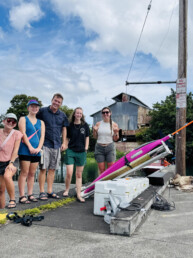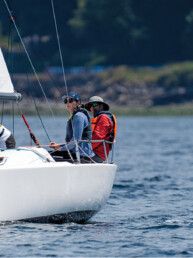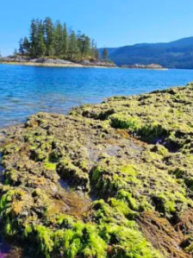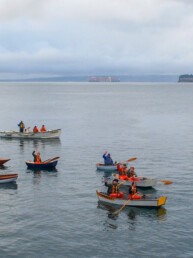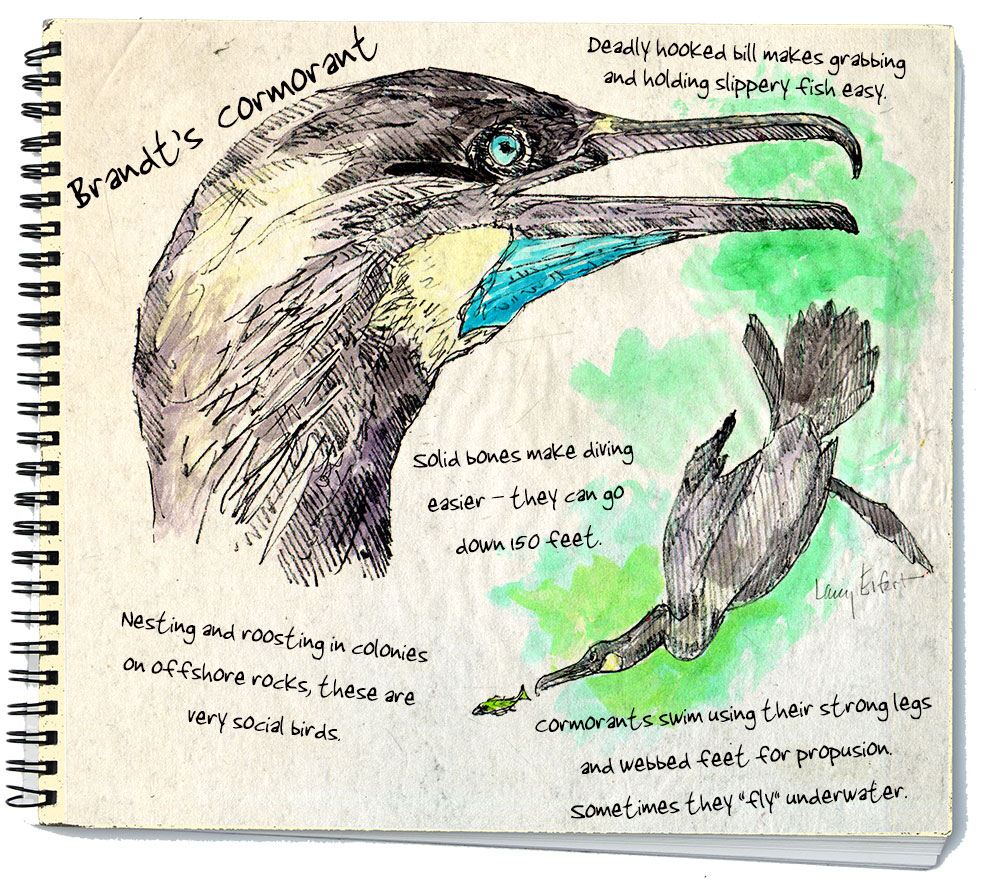 Artist’s View: Secrets of the Salish Sea
Artist’s View: Secrets of the Salish Sea
Brandt’s Cormorant
Brandt’s cormorants are common throughout the Salish Sea in the winter. During the summer months, they’re focused on nesting and raising a family in coastal waters. They are among three cormorant species that you might see here: Brandt’s, double-crested, and pelagic. This one is sized in the middle—at about 3 feet long (bill to tail) with a 4-foot wingspan. A big bird, it is still just half the size of a bald eagle. Brandt’s have the shortest tail of the local cormorants, making identification easier. Observers only see this cormorant’s blue face patch during breeding season. The patch is a truly beautiful iridescent shade of turquoise and matches its eyes. After that breeding stage (when they are less common in local waters), look for them along the outer coast around offshore rocks where they nest or roost together, or mixed with other seabirds diving for a meal of small fish such as Pacific herring.
Solid Bones, Super Swimmers
Most birds have hollow bones. This allows them to fly more easily thanks to the saved weight, a design element they share with every airplane ever built. Since it takes energy to life heavy objects into the air, evolution has always favored lighter birds that require smaller flight muscles and less energy (food). None of this applies to cormorants. Their solid bones permit them to easily swim underwater in search of a meal. They can expel air trapped under feathers, allowing them to sink just below the surface, neck and head looking like a submarine’s periscope. I’ve seen this and immediately thought I was seeing a snake of some sort; and, sure enough, another name for a cormorant is “snake bird.” Most often, cruisers see these birds flying in a long line at mast-height over the water and heading for either fishing grounds or to a roosting rock for a restful night.
Larry Eifert
Larry Eifert paints and writes about the Pacific Northwest from Port Townsend. His large-scale murals can be seen in many national parks across America, and at larryeifert.com.


